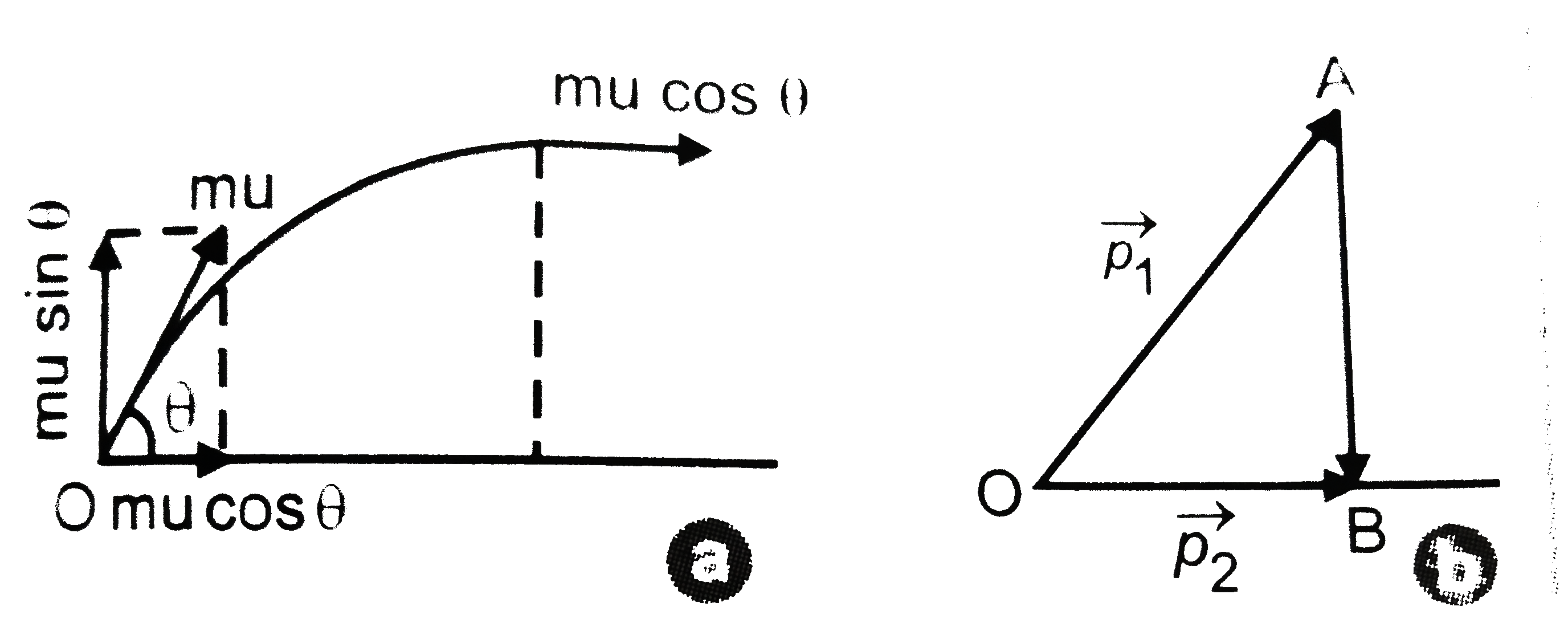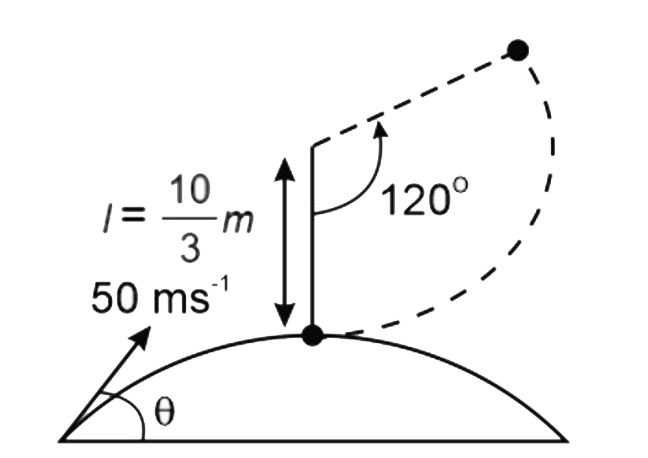A projectile of mass 100g is fired with a velocity of 20ms−1 making an angle of 30∘ with the borizontal. As it rises to the highest point of its path its momentum changes by .
1/2kgms−1
1kgms−1
2kgms−1
none of these
The correct Answer is:B
Ist method. Initial momentum of the body,
→P1=m→u=(0.1×20) along OA
Final momentme, →P2=μcoshtη along OB
=0.1×20×cos30∘
=0.1×20×√32=√3kgms−1 along OB.
 .
.
Change in momentum
=→P2−→P−1−−→OB−−−→OA=−−→AB
Now, | vec AB| = sqrt ( (OA)^2 - (OB)^2)<br> = sqrt (2^2 - ( sqrt 3)^@) = 1 kg ms^(-1).<br>2ndmethok.Horizontalmomentumofthebodyat(O)andathighestpo∈issame.Theverticalmomenitumat O = mv sin theta andathifhestp∮is zero . Therefore, charge in momentum<br> = mv sin hteta = 0.1 xx 20 xx sin 30^@ = 1 kg ms^(-1).
Topper's Solved these Questions
- BOOK - PRADEEPCHAPTER - KINEMATICSEXERCISE - 4 NCERT multiple Choice10videos
KINEMATICS
- BOOK - PRADEEPCHAPTER - KINEMATICSEXERCISE - 4 NCERT Integer type4videos
KINEMATICS
- BOOK - PRADEEPCHAPTER - KINEMATICSEXERCISE - 2 NCERT multiple15videos
KINEMATICS
- BOOK - PRADEEPCHAPTER - GRAVIATIONEXERCISE - Assertion-Reason Type Questions19videos
GRAVIATION
- BOOK - PRADEEPCHAPTER - LAWS OF MOTIONEXERCISE - Assertion- Reason Type Questions17videos
LAWS OF MOTION
Similar Questions
A particle of mass 100 g is fired with a velocity of 20ms−1 making an angle of 30∘ with horizontal. When it rises to the point of its highest point, find the change in its momentum.
View SolutionAn object of mass 5 kg is projecte with a velocity of 20ms−1 at an angle of 60∘ to the horizontal. At the highest point of its path , the projectile explodes and breaks up into two fragments of masses 1kg and 4 kg. The fragments separate horizontally after the explosion, which releases internal energy such that K.E. of the system at the highest point is doubled. Calculate the separation betweent the two fragments when they reach the ground.
View Solution
Knowledge Check
- Question 1 - Select One
A projectile of mass 20 kg is fired with a velocity of 400m/sat an angle of 45∘ with the horizontal .At the highest point of the trajectocy the projectile explodes into two fragments of equal mass,one of which falls vertically downward with zero initial speed, The distance of the point where the other fragment falls from the point offiring is:
A24000 mB16000 mC32000 mD8000 m - Question 2 - Select One
At the highest point of the path of a projectile, its
AKinetic energy is maximumBPotential energy is minimumCKinetic energy is minimumDTotal energy is maximum - Question 3 - Select One or More
At the highest point of the path of a projectile, its
Aspeed is zeroBspoeed is minimumCkinetic energy is minimumDPotential energy is maximum
A bullet of mass m is fired with a velocity of 50ms−1 at an angle θ with the horizontal . At the highest point of its trajectory , it collides head on with a body connected to massless string of length l and gets embedded in the bob of mass 3m. After the collision , the string moves to an angle of 120∘ .What is the angle θ ?
 View Solution
View SolutionA body of mass 1kg is projected with velocity 50ms−1 at an angle of 30∘ with the horizontal. At the highest point of its path a force 10 N starts acting on body for 5s vertically upward besids gravitational force, what is horizontal range of the body (Take, g=10ms−2)
View SolutionA particle is fired with velocity u making angle θ with the horizontal.What is the change in velocity when it is at the highest point?
View SolutionA particle of mass m is projected with a velocity μ at an angle of θ with horizontal.The angular momentum of the particle about the highest point of its trajectory is equal to :
View SolutionA particle of mass m is projected with velocity making an angle of 45∘ with the horizontal When the particle lands on the level ground the magnitude of the change in its momentum will be .
View Solution

